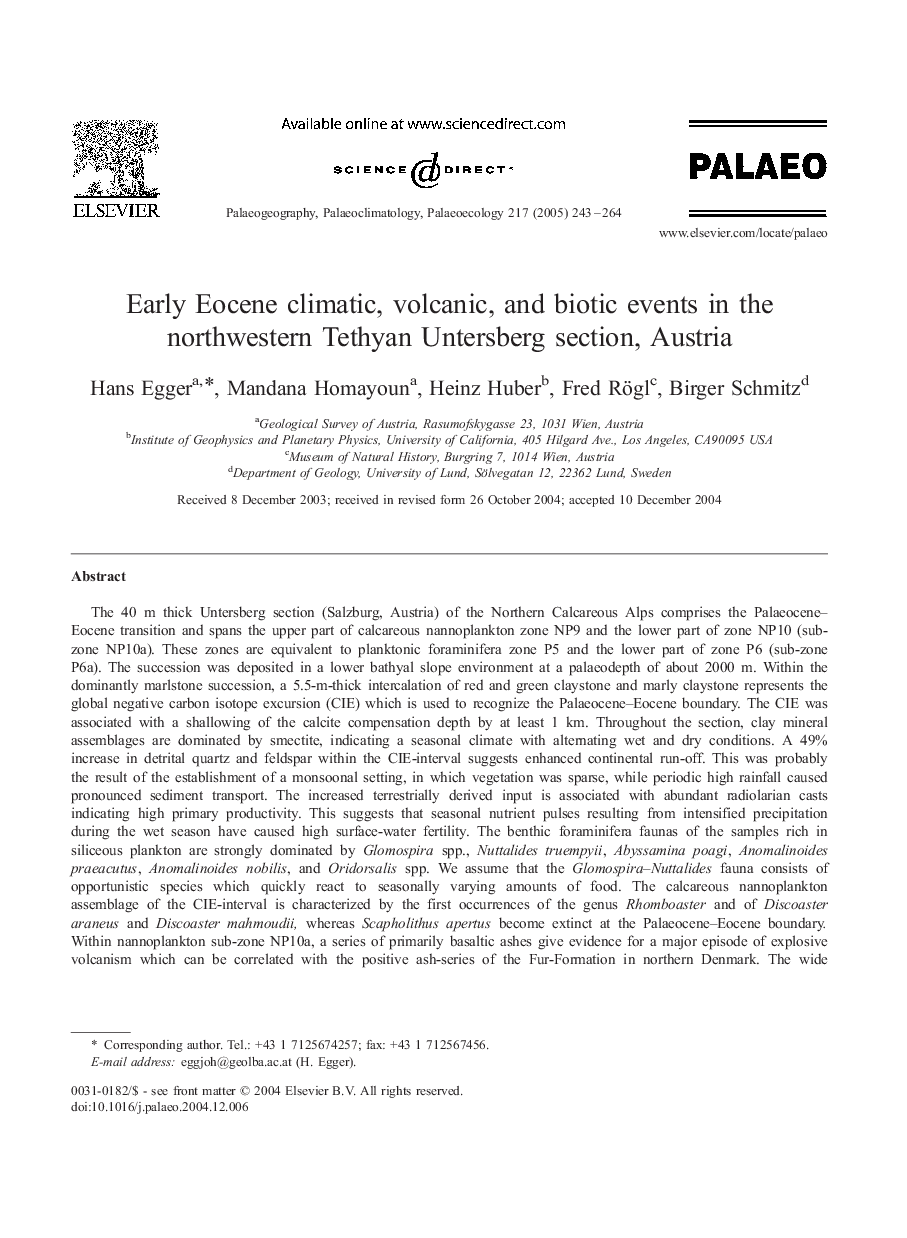| Article ID | Journal | Published Year | Pages | File Type |
|---|---|---|---|---|
| 9463192 | Palaeogeography, Palaeoclimatology, Palaeoecology | 2005 | 22 Pages |
Abstract
The 40 m thick Untersberg section (Salzburg, Austria) of the Northern Calcareous Alps comprises the Palaeocene-Eocene transition and spans the upper part of calcareous nannoplankton zone NP9 and the lower part of zone NP10 (sub-zone NP10a). These zones are equivalent to planktonic foraminifera zone P5 and the lower part of zone P6 (sub-zone P6a). The succession was deposited in a lower bathyal slope environment at a palaeodepth of about 2000 m. Within the dominantly marlstone succession, a 5.5-m-thick intercalation of red and green claystone and marly claystone represents the global negative carbon isotope excursion (CIE) which is used to recognize the Palaeocene-Eocene boundary. The CIE was associated with a shallowing of the calcite compensation depth by at least 1 km. Throughout the section, clay mineral assemblages are dominated by smectite, indicating a seasonal climate with alternating wet and dry conditions. A 49% increase in detrital quartz and feldspar within the CIE-interval suggests enhanced continental run-off. This was probably the result of the establishment of a monsoonal setting, in which vegetation was sparse, while periodic high rainfall caused pronounced sediment transport. The increased terrestrially derived input is associated with abundant radiolarian casts indicating high primary productivity. This suggests that seasonal nutrient pulses resulting from intensified precipitation during the wet season have caused high surface-water fertility. The benthic foraminifera faunas of the samples rich in siliceous plankton are strongly dominated by Glomospira spp., Nuttalides truempyii, Abyssamina poagi, Anomalinoides praeacutus, Anomalinoides nobilis, and Oridorsalis spp. We assume that the Glomospira-Nuttalides fauna consists of opportunistic species which quickly react to seasonally varying amounts of food. The calcareous nannoplankton assemblage of the CIE-interval is characterized by the first occurrences of the genus Rhomboaster and of Discoaster araneus and Discoaster mahmoudii, whereas Scapholithus apertus become extinct at the Palaeocene-Eocene boundary. Within nannoplankton sub-zone NP10a, a series of primarily basaltic ashes give evidence for a major episode of explosive volcanism which can be correlated with the positive ash-series of the Fur-Formation in northern Denmark. The wide dispersal distance of the tephras implies Plinian-scale eruptions and multiple ejections of large volumes of pyroclastic material.
Related Topics
Physical Sciences and Engineering
Earth and Planetary Sciences
Earth-Surface Processes
Authors
Hans Egger, Mandana Homayoun, Heinz Huber, Fred Rögl, Birger Schmitz,
